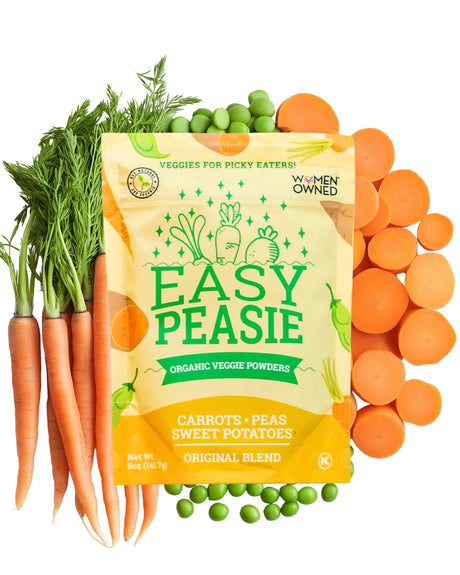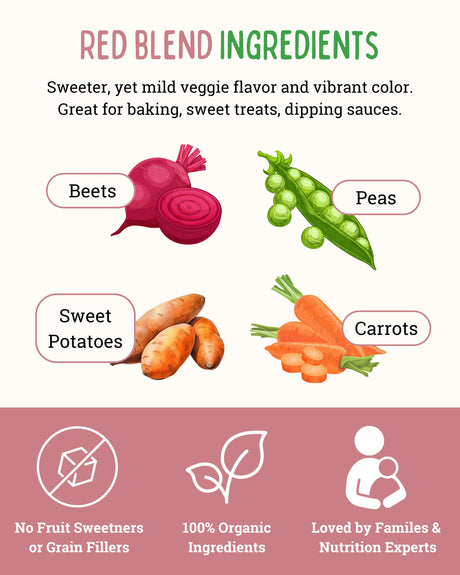Embracing the Season: The Bounty of Fall
There's something truly magical about the shift from summer's warmth to the crisp, cool days of fall. As the leaves change color and the air becomes brisk, our plates also undergo a transformation.
Seasonal eating isn't just a trend; it's a way to reconnect with nature, to nourish our bodies with what the earth naturally provides during each time of the year. And oh, the bounty of fall! It brings with it a rich tapestry of flavors, colors, and textures that are both comforting and nourishing.
Meet the Stars: Apples and Pears
Among the many gifts of the season, two fruits stand out for their versatility, flavor, and incredible nutritional profiles: apples and pears. These aren't just your average fruits; they're the stars of autumn, gracing our orchards, markets, and tables with their presence.
Whether you're biting into a juicy apple during a scenic orchard visit or slicing a ripe pear over your morning oatmeal, these fruits are quintessential fall favorites. As we dive deeper into their benefits, you'll see why these two deserve a special spotlight in your fall eating repertoire.

The Apple Advantage
Historical Context: Apples Through the Ages
Apples have long been a symbol of temptation, knowledge, and health. From the biblical tales of Adam and Eve to the famous adage "an apple a day keeps the doctor away," apples have woven their way into the fabric of many cultures and histories.
Ancient civilizations, from the Greeks to the Romans, cherished apples not just for their taste but also for their symbolic significance. Over time, as explorers traveled and traded, apples found their way to various parts of the world, each region cultivating its unique varieties and traditions.
Nutritional Breakdown: More Than Just a Crunchy Snack
When you bite into an apple, you're not just getting a burst of juicy sweetness; you're also nourishing your body with a host of essential nutrients. Apples are a fantastic source of dietary fiber, particularly soluble fiber, and provide essential vitamins like vitamin C and potassium. Plus, they're low in calories, making them a weight-friendly snack.
Health Benefits: Beyond the Bite
- Heart Health: One of the standout nutrients in apples is soluble fiber, which has been linked to cholesterol regulation. By helping to lower bad cholesterol levels, apples play a role in promoting a healthy heart.
- Digestive Health: Apples contain pectin, a type of soluble fiber that aids in digestion. Pectin not only helps maintain a healthy gut but also supports regular bowel movements.
- Antioxidant Properties: Apples are rich in antioxidants, which combat free radicals in the body. These free radicals can cause oxidative stress, leading to chronic diseases. By including apples in your diet, you're giving your body a natural defense against these harmful molecules.
Varieties and Uses: An Apple for Every Occasion
There's a vast world of apple varieties out there, each with its unique flavor profile and texture. From the tartness of Granny Smith to the sweet, crisp nature of Honeycrisp, there's an apple for every palate.
While some apples are perfect for snacking, others shine when baked into pies or simmered into sauces. Exploring different apple types can be a culinary adventure, allowing you to discover the best uses for each variety, be it in salads, desserts, or simply enjoyed fresh off the tree.
The Power of Pears
Historical Context: Pears Through Time
Pears, with their delicate flavor and buttery texture, have been cherished fruits for millennia. Historical records trace their origins back to ancient China, where they were revered not only for their taste but also for their symbolic associations with immortality.
As with apples, the journey of pears through history is one of exploration and trade. The ancient Greeks celebrated pears in their myths, and the Romans cataloged numerous varieties and even penned down pear-based recipes.
Over the centuries, as trade routes expanded, pears made their way to Europe and eventually the Americas, where they became a staple in many orchards.

Nutritional Breakdown: A Pear-fect Source of Nutrients
Pears are not just delightful to the palate; they're also packed with a range of nutrients. They offer a good dose of dietary fiber, essential for digestive health, and are a source of vitamin C, potassium, and even lesser-known minerals like boron.
Their low-calorie content combined with their high nutrient density makes them an excellent choice for health-conscious individuals.
Health Benefits: Beyond the Juicy Bite
- Gut Health: One of the standout features of pears is their fiber content. This dietary fiber aids in digestion, ensuring a smooth digestive process and preventing issues like constipation.
- Immune Support: Pears are a good source of vitamin C, a powerful antioxidant that plays a crucial role in supporting the immune system. Regular consumption can help bolster the body's natural defenses.
- Bone Health: Not many are aware of the presence of boron in pears, a mineral that plays a role in maintaining bone health. Boron helps the body utilize calcium and magnesium, essential for strong bones.
Varieties and Uses: A World of Pears to Discover
From the crisp Asian pear to the soft and juicy Bartlett, the world of pears is diverse and flavorful. Each variety has its unique taste and texture, making them suitable for various culinary adventures.
While some pears are best enjoyed fresh, others take on a new life when cooked, baked, or even grilled. Exploring the different types of pears can lead to delightful culinary discoveries, be it in savory dishes, sweet desserts, or simply paired with cheeses on a platter.
Comparative Analysis: Apples vs. Pears
Nutritional Face-Off: How Do They Stack Up?
When it comes to nutrition, both apples and pears shine in their own right. They both offer a good dose of dietary fiber, essential for digestive health.
Apples tend to have a slightly higher content of vitamin C, while pears have a bit more potassium. Both fruits are low in calories, making them a guilt-free snack option.
The presence of antioxidants in both ensures that they play a role in combating free radicals, though the types of antioxidants may vary between the two.
Taste and Texture: A Tale of Two Fruits
While both apples and pears belong to the same botanical family, their taste and texture profiles can be quite distinct. Apples are often crisper and can range from extremely sweet (like Honeycrisps) to tart (like Granny Smiths).
Pears, on the other hand, are known for their buttery texture, especially when ripe. Their flavor is often more subtle and can be described as mellow and sweet, with some varieties having a hint of floral.
Culinary Versatility: From Salads to Pies
Both apples and pears are incredibly versatile in the kitchen. Apples, with their firm texture, hold up well in cooking and baking. They're a favorite in pies, crisps, and tarts, but also shine in savory dishes, paired with pork or roasted vegetables.

Their tartness can be a great counter to rich, savory flavors. Pears, with their softer texture, are delightful in desserts like poached pears or pear clafoutis. They can also be used in smoothies, salads, or simply paired with cheese for a sophisticated treat.
The key is to choose the right variety for the right dish, and the culinary possibilities are endless.
Incorporating Apples and Pears into Your Diet
Recipes and Ideas to Savor the Season
Breakfast Delights: Start Your Day Right
Apples and pears can effortlessly elevate your morning routine. Consider blending them into smoothies for a fiber-rich start.
If you're an oatmeal enthusiast, diced apples or pear toppings, perhaps with a sprinkle of cinnamon or nutmeg, can transform your bowl into a fall-themed delight.
And let's not forget baked goods! Apple muffins or pear pancakes drizzled with a touch of honey can make weekend breakfasts feel like a special treat.
Lunch/Dinner Inspirations: Beyond the Ordinary
When it comes to main meals, these fruits offer a refreshing twist. Think of a crisp apple salad with walnuts and feta or roasted pears alongside your favorite protein. Apples, with their slight tartness, can be cooked down into sauces that pair wonderfully with dishes like pork chops or roasted chicken.
Pears, with their mellow sweetness, can be a surprising addition to warm grain bowls or even pizzas!
Snack Time: Quick and Nutritious
For those mid-day hunger pangs, apples and pears come to the rescue. Enjoy them fresh and sliced, perhaps with a smear of almond butter or a sprinkle of chia seeds.
If you're feeling adventurous, try making apple chips or pear crisps in the oven for a crunchy, healthy snack. And for a creamy treat, consider dips like a spiced pear yogurt dip or an apple hummus.

Storage Tips: Keeping Them Fresh
To ensure you get the most out of these fruits, proper storage is key. Apples are best kept in the crisper drawer of your refrigerator, where they can stay fresh for weeks.
Pears, on the other hand, should be ripened at room temperature until they yield slightly to pressure. Once ripe, transfer them to the fridge to slow down further ripening.
Remember, it's best to store these fruits away from other produce, as they release ethylene gas, which can speed up the ripening of other fruits and veggies.
Celebrating Fall's Nutritional Bounty
A Season of Richness
As the leaves turn golden and the air grows crisp, fall ushers in a harvest of nutritional treasures, with apples and pears taking center stage. These fruits, with their unique flavors and textures, are not just a treat for the palate but also pack a punch when it comes to health benefits. From heart health to bone strength, they truly embody the essence of nature's goodness.
The Power of Seasonal Eating
There's something inherently special about eating foods that align with the seasons. Seasonal produce tends to be fresher, richer in nutrients, and more flavorful. Moreover, it connects us to nature's rhythm, reminding us of the cyclical beauty of life.
By choosing apples and pears during their peak season, we're not just making a delicious choice but also a health-conscious one.
Embrace the Flavors of Fall
As we cozy up in our sweaters and prepare for the festivities ahead, let's make apples and pears a staple in our kitchens. Whether you're baking a pie, whipping up a salad, or simply enjoying a fresh slice, there's no limit to how you can savor these fruits.
So, here's a call to action for all our readers: Dive deep into the flavors of the season, experiment with new recipes, and most importantly, cherish the simple joys that apples and pears bring to our tables.
Leave your comments below; we love to hear from you! And don't forget to follow us for more veggie info and convo on YouTube, Facebook, and Instagram! ~ThePeas













